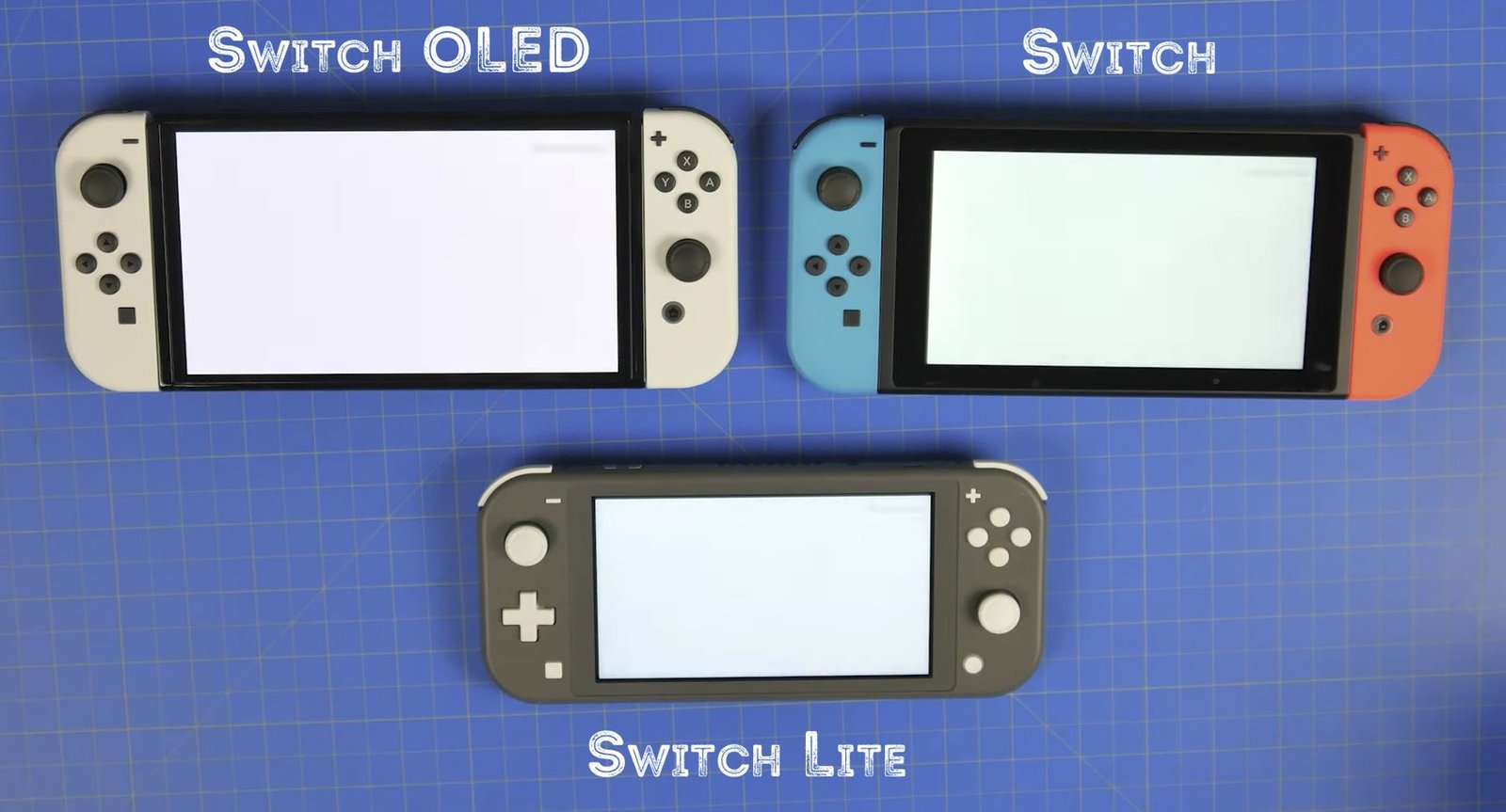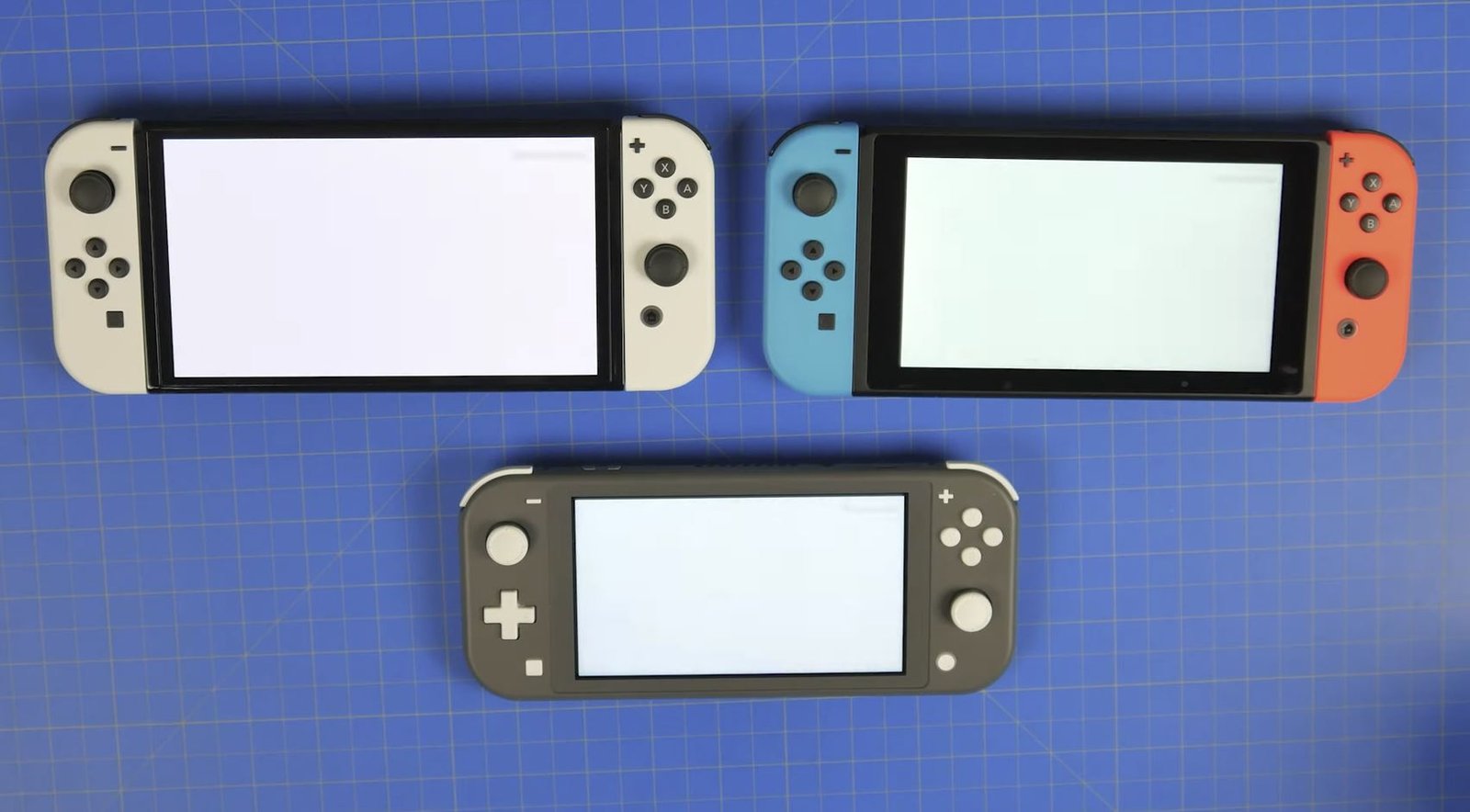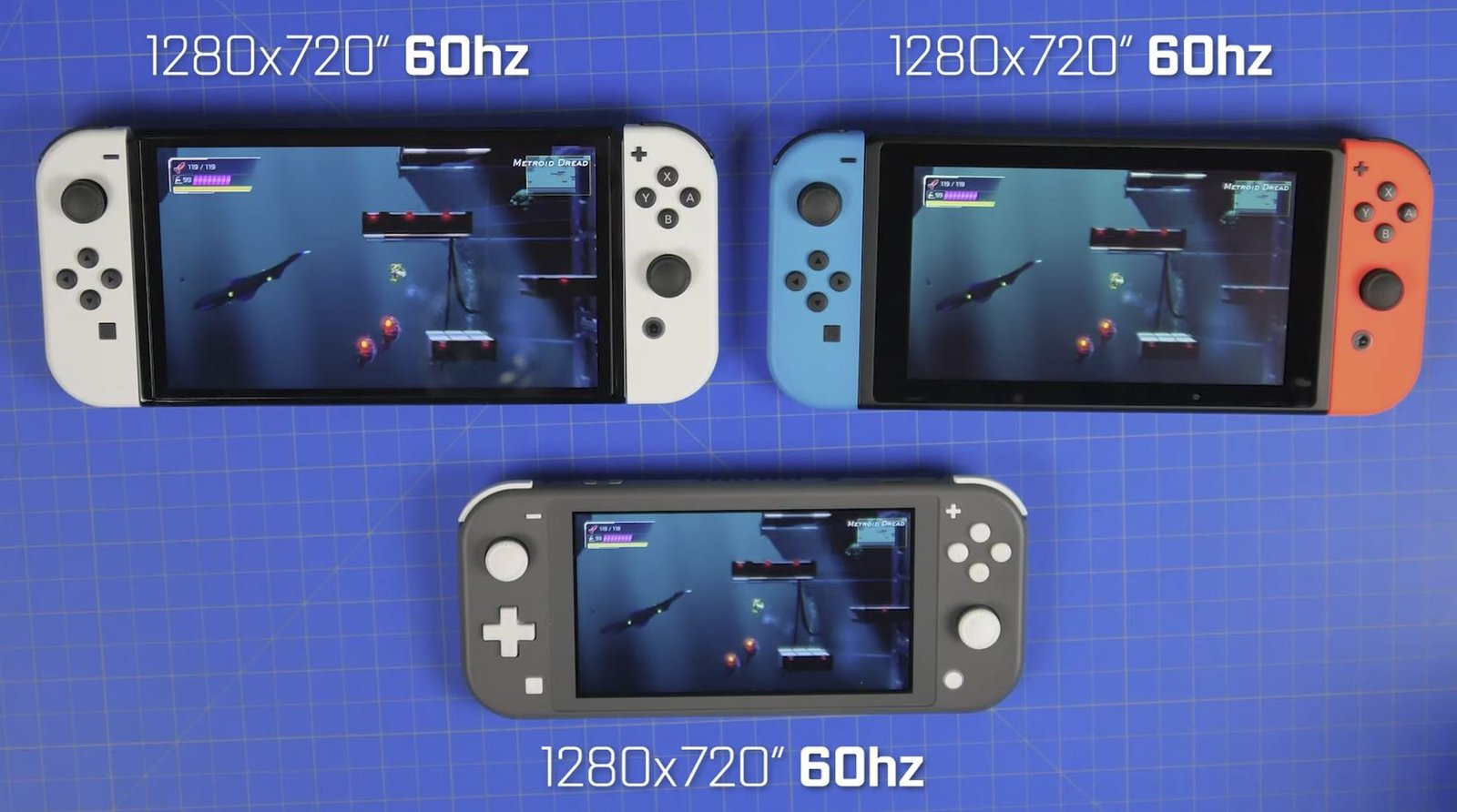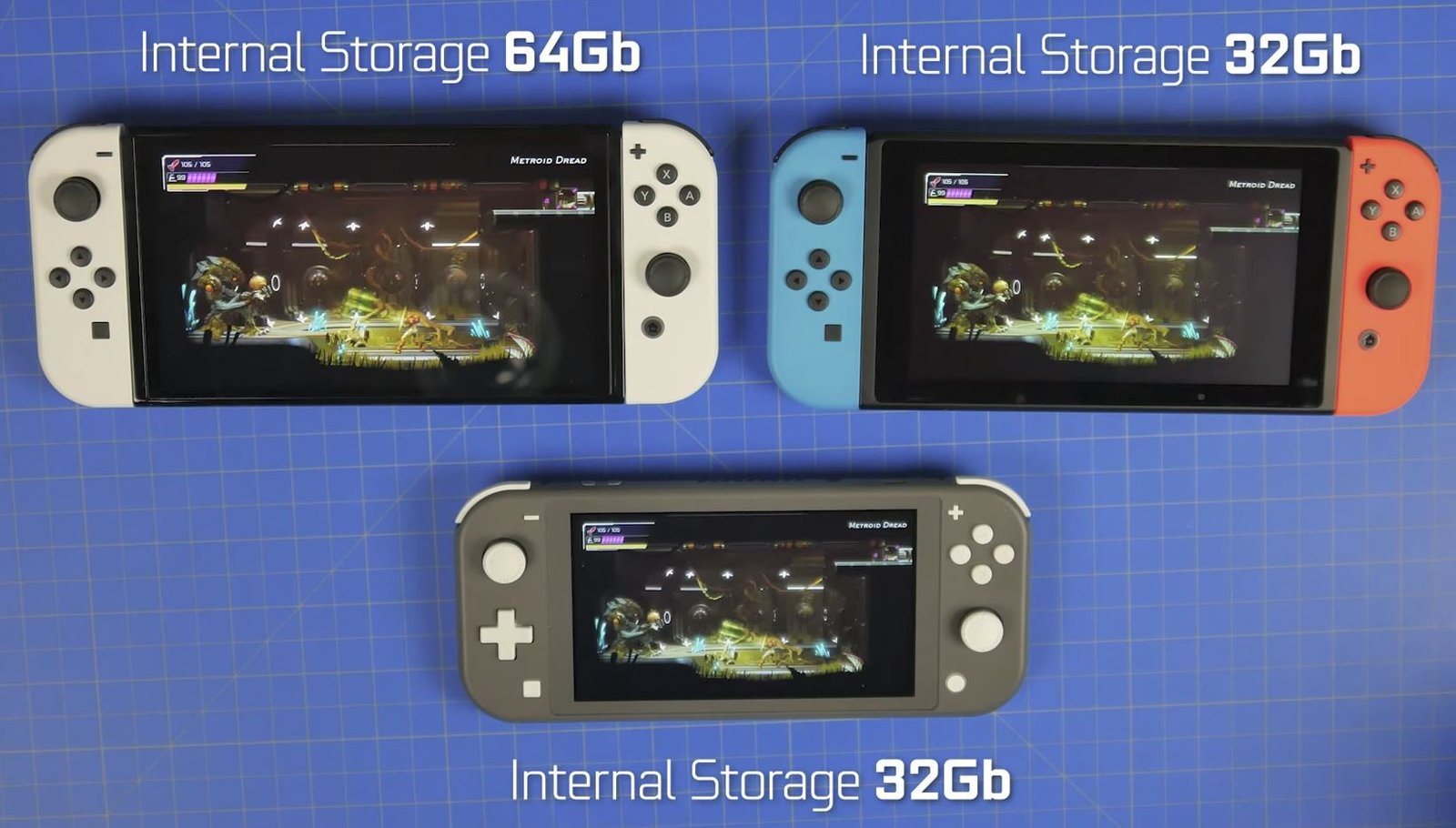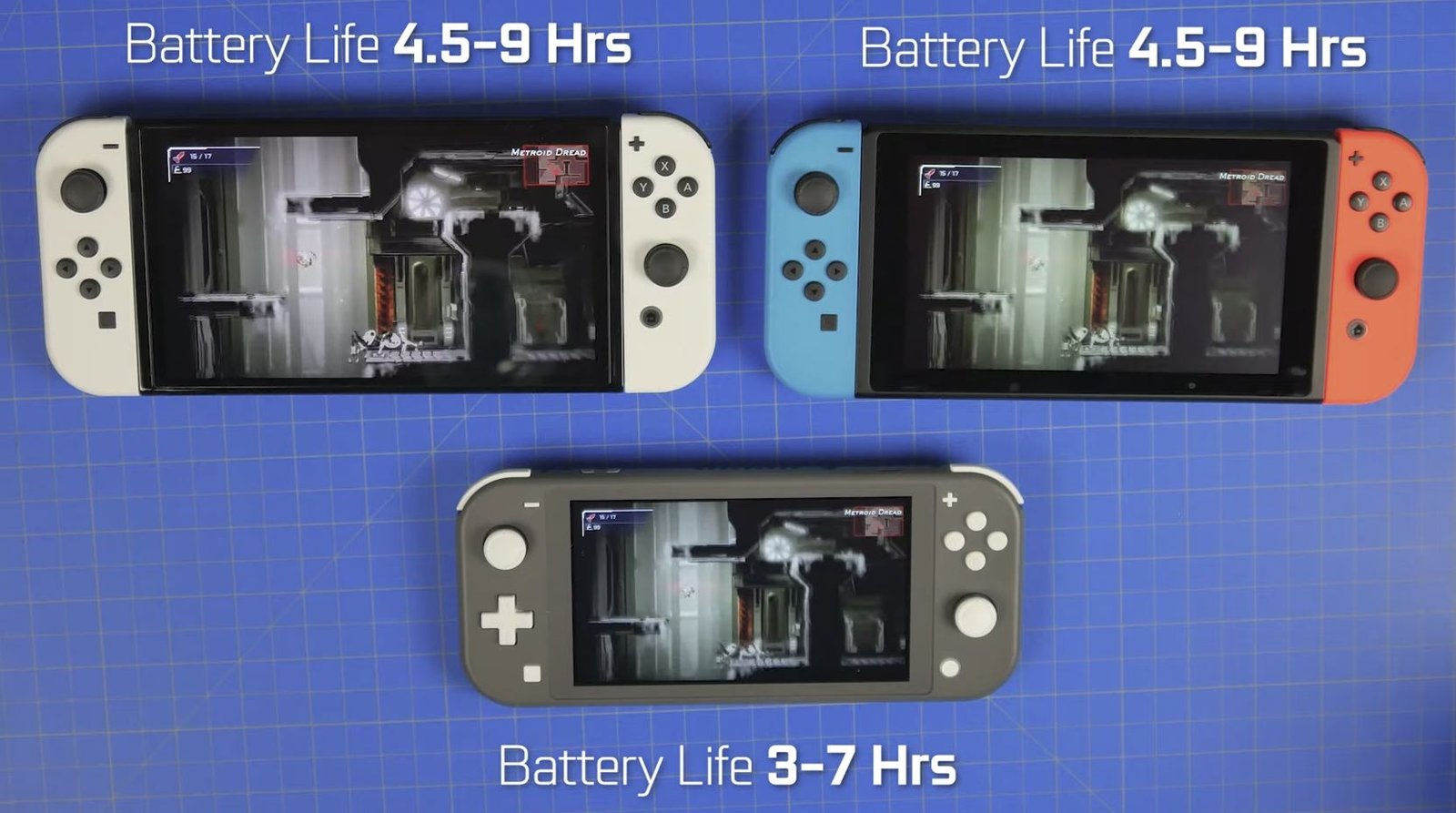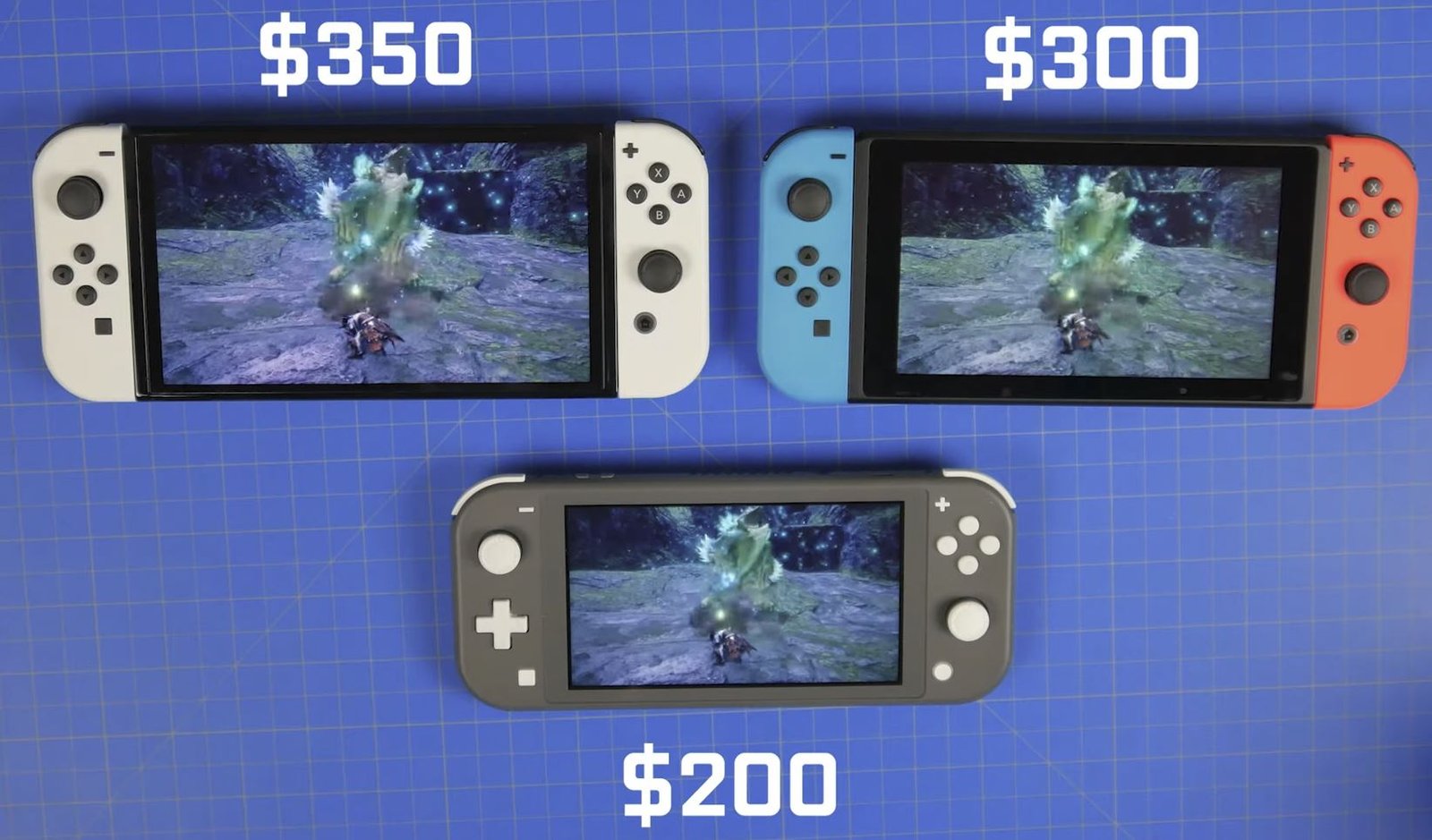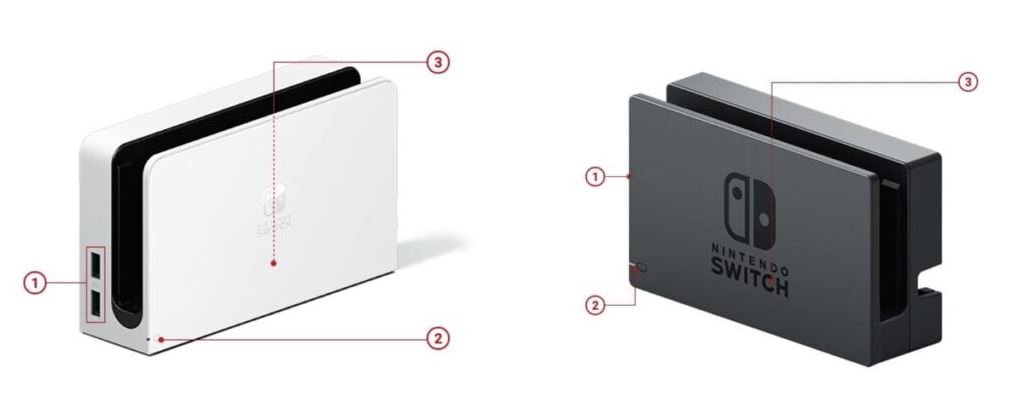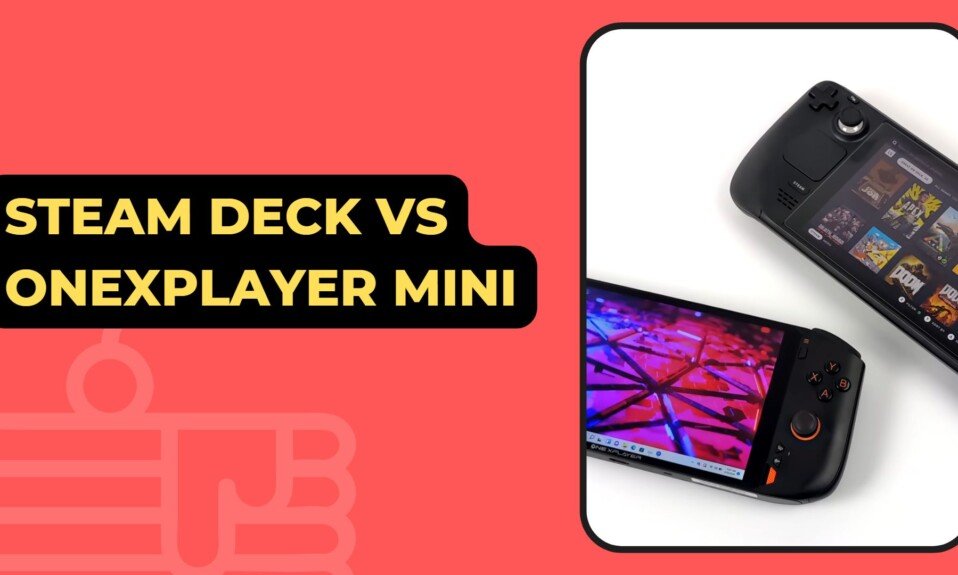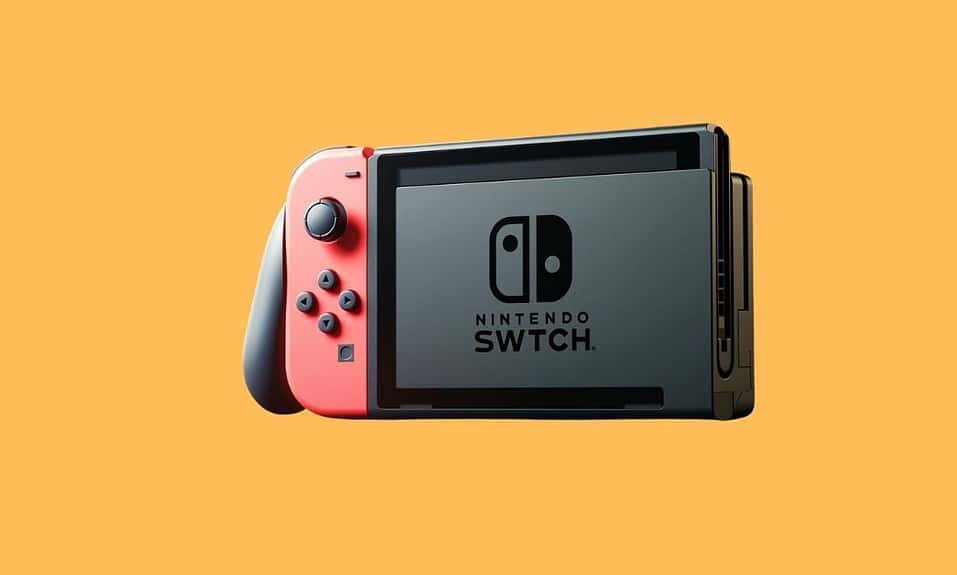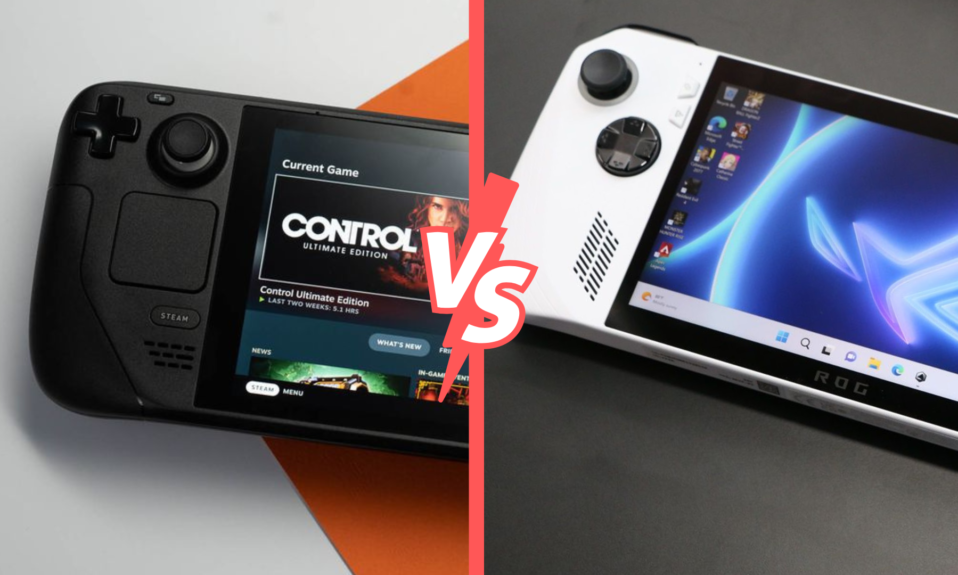Five years have passed since the Nintendo Switch’s March 2017 release, and on October 8, 2021, the Nintendo Switch (organic EL model) with an organic EL display was released, and the Nintendo Switch series now consists of three parts. turned into a model.
It seems like only yesterday that Nintendo stunned us with the Nintendo Switch. It was a portable console that reminded us of the legendary Gameboy, but with an unrivalled technological display. Nintendo placed (literally) a little console in our hands that could be used everywhere.
The Nintendo Switch is one of the most popular gaming platforms on the market. It comes with a built-in screen and controllers that can be used to play games on the go. But just how powerful is the Nintendo Switch Lite? Let’s take a look at the different versions and see how they compare.
The Nintendo Switch Lite is a more affordable option that doesn’t come with a dock or detachable Joy-Con controllers. It has a 6.2-inch screen and only has 32GB of storage, compared to the 64GB of storage on the other two versions of the Switch. The Nintendo Switch OLED is the most expensive option and has a 9.7-inch screen. It also comes with a dock and detachable Joy-Con controllers.
However, Nintendo has been producing updated versions of the platform in recent years. Today, the Nintendo Switch Lite, Switch, and Switch OLED are available. Each one stands out in a different way, so even though they are fairly similar, you must pay great attention to all of the details if you don’t want to be surprised: resolution, storage, CPU, battery. Fortunately, this review contains all of the information you need to know about these systems.
Each Nintendo console’s specifications can be found here. This is quite useful to know ahead of time if they meet your expectations or if you have avoided making a bad buy. Don’t worry if you don’t grasp something; we’ll go over it again later.
Features
The Nintendo Switch Lite was introduced on September 20, 2019. It is a mobile terminal type with a screen that has been shrunk from 6.2 inches to 5.5 inches, making the body smaller and lighter.
- Equipped with a 5.5-inch display,
- uses an LCD display.
- The storage capacity is 32GB.
- Miniaturization with a built-in controller in the main body
- You can play games compatible with mobile mode.
- 275g lighter
- Battery startup time is 3-7 hours.
If you frequently play outside and value portability, the Nintendo Switch Lite is a good choice. Switch Light is very inexpensive, so if you don’t play Switch on TV, it will suffice.
The Nintendo Switch was released on March 3, 2017, and the current model was upgraded to a new model with enhanced battery life on August 30, 2019.
- Equipped with a 6.2-inch display,
- uses an LCD display.
- The storage capacity is 32GB.
- The controller can be removed.
- You can play mobile/table/TV mode compatible games.
- Battery startup time is 4.5-9.0 hours.
What you can do is the same as with the Nintendo Switch OLED, so if you want to save money and only play in TV mode, you can choose the standard version of the Nintendo Switch and it will work fine.
The Nintendo Switch OLED features a 7-inch widescreen display, a sleek dedicated dock, and a high-end edition with a wired LAN connector.
- 7-inch large screen display
- Bright and colorful screen with organic EL display
- Storage capacity is 64GB and can store a lot of data.
- adjustable angle with a free-stop type wide stand
- Better sound quality with an improved built-in speaker
- The controller can be removed.
- You can play games compatible with mobile phones, tables, and TV modes.
- Battery startup time is 4.5-9.0 hours.
The screen size has been reduced to 7 inches, while the main body size has remained about the same, making table mode easier to play.
Furthermore, by using an OLED display, you may not only enjoy games in vibrant colors but also improve vision in bright regions by increasing contrast, making it easier to play the Nintendo Switch outside of the OLED model.
The SoC and main memory are the same as in the standard version, but the internal design should have been improved, and it appears that heat generation has been reduced. Early Nintendo switches generated a lot of heat, and the main body occasionally bowed. After 5 years, it might be a good idea to switch.
| Switch Lite | Nintendo Switch | Switch OLED | |
|---|---|---|---|
| $ | CHECK PRICE | CHECK PRICE | CHECK PRICE |
| Release Date | 21/09/2019 | 03/03/2017 | 8/10/2021 |
| Dimensions | 9 x 20 x 1.4 cm | 10.16 x 23.88 x 1.4 cm | 10.16 x 24.13 x 1.4 cm |
| Buttons | POWER/volume | POWER/volume | POWER/volume |
| Screen | 5.5″ | 6.2″ | 7″ |
| Resolution | 1280 x 720px | 1280 x 720px | 1280 x 720px |
| Touch screen | Yes | Yes | Yes |
| CPU | Custom Tegra | Custom Tegra | Custom Tegra |
| GPU | Custom Nvidia | Custom Nvidia | Custom Nvidia |
| RAM | 4GB | 4GB | 4GB |
| Storage | 32GB | 32GB | 64GB |
| Compatible memory cards | microSDHC + microSDXC | microSDHC + microSDXC | microSDHC + microSDXC |
| Bluetooth 4.1 | Yes | Yes | Yes |
| Wi-Fi | Yes | Yes | Yes |
| Usb connector | USB-C | USB-C | USB-C |
| Speakers | Stereo | Stereo | Stereo |
| Audio connector | 3.5mm jack | 3.5mm jack | 33.5mm connector with 4 poles |
| Battery | 3570 mAh | 4310 mAh | 4310 mAh |
| Battery life | 3 – 7 hours | 4.5 – 9 hours | 4.5 – 9 hours |
| Charge time | 3 hours | 3 hours | 3 hours |
| Loading time | 3 hours | 3 hours | 3 hours |
| Sensor | Accelerometer, gyroscope | Accelerometer, gyroscope, brightness sensor | Accelerometer, gyroscope, brightness sensor |
| Motion controls | Yes | Yes | Yes |
Design
The first stage in our assessment is to examine the appearance of the consoles. In general, it is a screen to which the Joy-Con (controllers) can be attached, at least in the case of the Nintendo Switch and the Switch OLED, because in the Switch Lite, the Joy-Con are an essential element of the console and cannot be removed or replaced at will. The Switch Lite is the lightest Nintendo device in terms of weight, albeit this may be owing to its somewhat smaller size.
If we look at the buttons themselves, we can see that each console has a power button and volume control button.
By the way, you’ve probably seen the asterisks in the comparison table, right in the Nintendo Switch Lite’s specifications. This is because, unlike the Switch and the OLED, it is an integral console.
Screen
The display on the Nintendo Switch is 6.2 inches (1,280 x 720 pixels). The Nintendo Switch (OLED model) features a 7-inch (1,280 x 720 pixel) display, while the Nintendo Switch Lite features a 5.5-inch (1,280 x 720 pixel) display.
The Nintendo Switch (OLED) has the same physical dimensions as the Nintendo Switch, but by lowering the bezels on the left and right sides of the screen, the screen size grows from 6.2 inches to 7 inches, allowing you to play games on a larger screen.
We have reached the point where some distinctions can be appreciated. For example, did you know that each of the three Nintendo systems has a different screen size?
Yes, it is correct. In reality, the Switch OLED features a 7″ x 5.5″ screen, which is larger than the Switch Lite. It makes a significant difference on smartphones of this size. However, the resolutions are similar (1280 x 720 px). The three consoles’ screens are, of course, touch-enabled.
Yes, we already know that the screen is important, but while deciding on one Nintendo or another (this applies to any system), you must consider characteristics like the CPU and memory, as these are critical to the console’s performance.
In this scenario, the three Nintendos are outfitted with an NVIDIA Custom Tegra, which isn’t half bad: 8 cores, a clock speed of 1000 MHz, a 64-bit architecture…
In terms of storage, the Switch OLED stands out with up to 64 GB of capacity, whereas the Switch and Switch remain at 32 GB. Don’t worry if your memory appears to be running low; you can expand it by up to 2 TB with a memory card. (either MicroSDHC or MicroSDXC).
What is the difference between an OLED display and an LCD display?
- OLED: The panel emits light, and the black is tighter and the color more vibrant.
- An LCD is a traditional panel with a backlight that illuminates the entire screen.
The liquid crystal display prevents the panel from shining on its own, and the backlight improves screen visibility, resulting in image quality with a white haze, such as in gloomy settings.
Because the OLED can emit light on its own, it can express deep dark, allowing you to play the game on a vibrant screen while improving visibility outside.
The Nintendo Switch Lite has a small screen size of 5.5 inches, but the resolution is the same, so if it is for mobile use, the size is not an issue.
Colors
The Nintendo Switch OLED is available in not only neon blue / neon red, but also elegant white.
The Nintendo Switch is available in three colours: neon blue, neon red, and grey, with the main body remaining grey by only changing the colour of the Joy-Con.
Each title is also available in cooperative designs for the Nintendo Switch. The Monster Hunter Rise Special Edition for the Nintendo Switch is grey in color, yet it features Monhan-like artwork. There is also a Nintendo Switch Mario Red x Blue Set colour.
The Nintendo Switch Lite now comes in five new colours: yellow, turquoise, grey, coral, and blue.
Sensors
It may seem unusual to hear about sensors when discussing consoles, but it is. All three consoles have an accelerometer and a gyroscope. The brightness sensor, on the other hand, is only found in the Switch and Switch OLED.
Battery
Another factor that may cause you to reject one choice in favour of another is battery life. Because the Nintendo Switch is a portable device, its battery life must be commensurate with its versatility. Is this going to be the case? Let’s have a look.
The Nintendo Switch and Switch OLED have a battery life that spans between 4.5 and 9 hours, depending on how it is used. This time is lowered on the Switch Lite, which ranges from 3 to 7 hours. The full charging time for all three consoles is roughly 3 hours.
TV mode
One of the most appealing aspects of the Nintendo Switch is its ability to connect to a television and transition from a portable console to a more traditional one.
As a result, it is critical to understand the video quality available in the many alternatives for enjoying the Nintendo Switch. On a Nintendo Switch or Switch OLED, you can watch it on a 1080p TV, but in handheld mode, the resolution is decreased to 720p.
What you should know, however, is that the Nintendo Switch Lite cannot be connected to a television, does not have a TV mode, and is thus a completely portable console.
Game Compatibility
On the Nintendo Switch OLED, the screen may be displayed on a TV by placing the main body in the designated dock “TV mode,” removing the Joy-Con from the main body, and playing “table mode,” with the Joy-Con on the main body. Install it and play in “portable mode.”
In such cases, the Nintendo Switch Lite does not enable TV output and instead only supports “portable mode.”
As a result, the Nintendo Switch Lite cannot play games that do not support handheld mode. You can play it, but you can’t play games that employ HD rumble, motion IR cameras, or the Joy-motion Con’s sensor.
By the way, if you buy Joy-con separately, you may use Nintendo Switch Light in table mode and use the HD vibration and motion IR camera.
However, if purchased individually, Joy-Con would cost around $60, and charging would require a Joy-Con charging handle or a charging stand like this.
One of the main selling points of the Nintendo Switch Lite is that it is designed to be more compatible with games than the original Nintendo Switch.
Some games, such as Super Mario Party, work just fine on both devices. Other games, such as The Legend of Zelda: Breath of the Wild, are better played on the original Nintendo Switch due to its higher power. Ultimately, it depends on the game you are looking to play and which features you value most.
If you want to play a wide variety of games without spending too much money, then buying a Nintendo Switch is a good idea. However, if you only want to play a few specific games and don’t mind playing them on a smaller device, then purchasing a Nintendo Switch Lite may be a better choice for you.
Controller difference
The controller for the Nintendo Switch OLED model and Nintendo Switch may be removed from the main unit to play games, while the Nintendo Switch Light cannot be removed to play games because it is an integrated controller.

Not only that, but the arrow keys on the left controller of the Nintendo Switch Lite have been converted from stand-alone buttons to cross-key buttons.
The Joy-con is designed to be used as a single controller after being detached from the main unit, so it cannot be used as a cross key. The Nintendo Switch Lite is integrated, so it can be used as a conventional cross key.
If you frequently play in handheld mode, the Nintendo Switch Lite may be superior to the Nintendo Switch. It appears to be simple to play normally.
Speaker Difference
Stereo is supported by the built-in speakers on the Nintendo Switch OLED, Nintendo Switch, and Nintendo Switch Light.
When playing games, the Nintendo Switch and Nintendo Switch Light both had good sound quality, but by adopting upgraded speakers, the Nintendo Switch (OLED model) has made it possible to experience games with even more powerful sound. increase.
It is unimportant that you can benefit from the good sound quality speaker of the Nintendo Switch OLED in stand mode and mobile mode, and the sound is emitted from the TV in TV mode.
In video games, sound is also incredibly significant. As a result, you have the option of using headphones (through a 3.5 mm port) or the console’s own speakers, which provide stereo sound. It’s nothing to write home about, but it serves its purpose.
| Switch Lite | Nintendo Switch | Switch OLED | |
|---|---|---|---|
| Speaker | Stereo | Stereo | Stereo (improved version) |
Stand Difference
| Switch Lite | Nintendo Switch | Switch OLED | |
|---|---|---|---|
| Stand | Fixed stand | No stand | Free top type wide stand |
| Adjustment | No | No | Yes |
Connectivity
Another important feature of these consoles is their connectivity. The three consoles each have Bluetooth (same version) and a Wi-Fi connection. The Switch Lite, on the other hand, offers NFC and an OLED display in addition to a LAN connection. The USB-C connector is found on all three Nintendo models.
| Switch Lite | Nintendo Switch | Switch OLED | |
|---|---|---|---|
| Dedicated dock | No | Yes | Yes |
| HDMI | No | HDMI port x 1 | HDMI port x 1 |
| NFC | Joy-con side | Yes | Yes |
The Nintendo Switch dedicated dock OLED model offers a rounded shape and a trendy ambiance.
Both include a USB-A port on the dock’s outside, but the Nintendo Switch OLED has ditched the internal USB port in favour of a wired LAN port.
The Nintendo Switch OLED can be directly connected to the wired LAN port, so you can get a stable communication environment without going through an adapter.

Since the Nintendo Switch has a USB connector on its specialised dock, you can connect to the network via wire by plugging in a wired LAN connection adaptor.

The Nintendo Switch Lite lacks a dedicated dock.
However, using a converter adaptor, you can establish a wired LAN connection. You can connect to the Internet through wire by utilising the USB-C to A converter adapter in this manner.
The advantage of connecting via cable LAN is that the line is steady, allowing you to avoid line drops during online games.
The best part about online competition is Splatoon 2, Mario Kart 8DX, Smash Bra, and other games. If the internet line is not steady, an error may occur that you cannot play on the way due to a line drop, so it is recommended to construct a wired LAN setting if you want to enjoy games with online competition.
The Nintendo Switch Lite has built-in NFC, whereas the Nintendo Switch has NFC placed in Joy-Con.
Which Nintendo to choose!
We came to some pretty fascinating conclusions after studying the three consoles, which we want to share with you so that you may make the best selection.
Looking at the specifications, the Nintendo Switch OLED stands out from the crowd. It is a minor upgrade to the basic Switch, featuring a larger screen, increased capacity, and improved connectivity. There is also no better alternative if you want to play on both the television and the console itself.
If you only intend to play on TV, the standard edition of the Nintendo Switch is recommended.
The Nintendo Switch OLED is suggested for individuals looking for a higher-end gaming experience, thanks to the brilliant colours of the screen in tabletop and handheld modes, as well as the sound quality of the built-in speaker.
Given the price, you will want a cheap Nintendo Switch Lite, but you may be disappointed, so we propose that you think about it carefully.
The Nintendo Switch Lite is recommended if you want something small and portable. If you don’t want to play on your TV, the Nintendo Switch Lite is sufficient.
If you frequently play in table mode, however, the Nintendo Switch OLED, which has a huge screen size of 7 inches and a screen, is advised.

